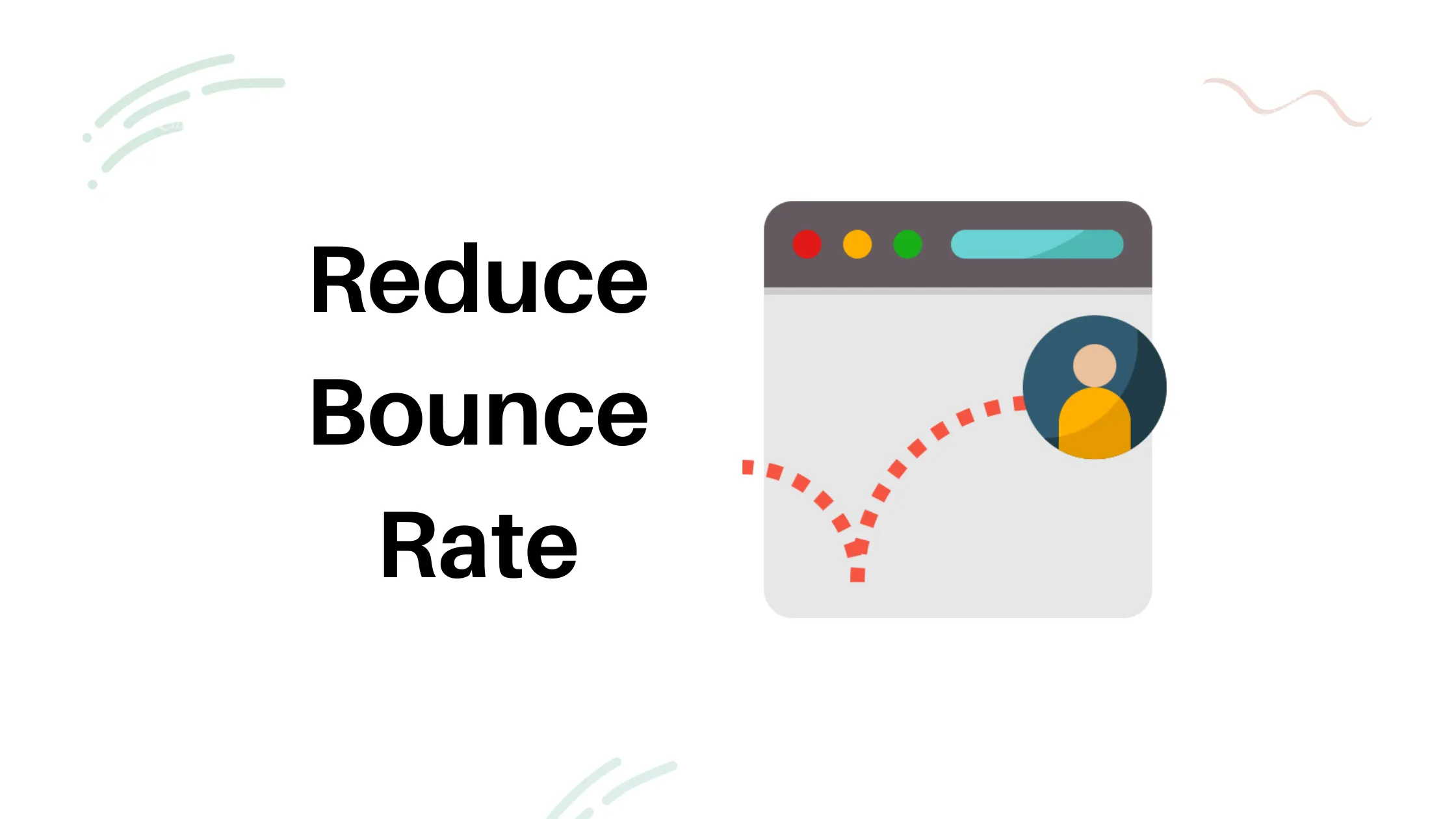“Bounce rate” is defined as the percentage of users that leave a website after visiting a single page. If 10 visitors come to your website, and 6 of them leave after visiting one page, your site will be said to have a bounce rate of 60%.
Having a high bounce rate is dangerous since it means that visitors coming to your website are not staying on it for long and that they are clicking away from it without looking at the various product and service pages.
When a large percentage of users abandon your website without exploring it, then you won’t be able to generate leads for sustaining your business.
In this post, we are looking at 7 ways in which you can reduce your site’s bounce rate and increase lead conversion.
1. Make Your Website Fast
The first thing that you need to do in order to make your visitors spend more time on your website is to make it fast. If your website takes too much time to load, the visitor will most likely abandon it.
According to Marketingdive.com, 53% of online users leave a website if it takes over 3 seconds to load. That pretty much means that if your website does not load within 3 seconds, it will get abandoned by more than half of the total number of online users.
There are a lot of different steps that you can take to reduce loading times for your site. For example, you can minify JS, CSS, and HTML. Similarly, you can reduce the number of animations and effects on the menus and widgets, etc.
As we said, there are many different things that you can do for making your website fast. Going into all of them in detail would take us away from our main topic, so we’re just going to leave this link to a guide on how to speed up your website.
2. Make your Website Easy to Navigate
Another reason why visitors can quickly abandon your website is difficulty in navigation. If the user cannot figure out how to get from one page to the other, they are going to leave and go to another website that offers them a better user experience.
You can make your website easy to navigate by adding a large and noticeable navigation bar at the top as well as conveniently-placed buttons and menus at the sides.
If there are a lot of different pages and sections on your website, you should make categories in the navigation bar…kind of something like the arrangement on Samsung’s official site:

And, of course, whatever you do, don’t forget to add a search option to the navigation bar.
Furthermore, you can even add internal links to your blog posts and articles so that your visitors can easily click on them while reading.
3. Upload Unique and High-Quality Content
Once a visitor clicks on your website, the first thing that they are going to start with is reading the content written on it.
If you have a blog, the visitor could open up a post at random to see whether they want to continue reading your stuff or not.
Or, even if you have a normal website, your visitor will look at the banner text, descriptions, and other types of general content posted on it.
The point is, that regardless of the type of website you have, you need to make sure that you upload unique content on it otherwise your bounce rate will not come down. It will actually go up.
Online users can easily spot it if a website mimics the content of another popular platform.
A plagiarism checker can be useful if you want to make sure that your content does not match any existing material on the internet.
These tools scan your text against billions of online pages, documents, databases, etc., to check for similarities.
4. Keep Updating Old Content and Adding Fresh Content
This applies mainly to blogs.
The blog posts and articles that are uploaded on a website are one of the major factors that affect its bounce rate. If a blog has useful and valuable content on it, it will attract and retain the attention of its visitors.
And once the visitors are attracted to a certain blog post or article, they will linger around the website to read it. They may also go to other pages that are linked to anchor texts in the content. This will ultimately lead to a lower bounce rate since the visitors will not be abandoning the site after visiting a single page.
However, for your content to be effective in reducing bounce rates and increasing conversions, you need to be consistent.
You have to keep going back to your old posts and updating them with newer information. Similarly, you have to consistently upload fresh and interesting content on a regular basis (daily or weekly).
5. Keep Your Content Readable
On top of being unique, the content you upload to your website should be easily readable as well.
Here’s the thing. As a rule, sophisticated content with a cultured vocabulary looks and sounds “high quality”. However, that is true when you are writing for an audience that can actually understand it.
On the other hand, when you are writing for an online audience, your content can end up getting read by a child, a non-native English speaker, or some simple folk that don’t have a fluent and thorough grasp of the language.
Considering this type of readership, it is advisable – necessary, actually – to upload such content that is understandable by all and sundry.
Some steps that you can take to keep your content include:
- Using active voice.
- Using simple words.
- Writing short sentences.
- Using headings, sub-headings and bullets.
6. Add Images and Graphics
While we are on the topic of content and how it can reduce your site’s bounce rate, it’s important to mention how images and graphics can play a similar role.
Essentially, by adding images and graphics to your content, you can make it more engaging. As a rule, readers are attracted to content that has images, graphics, and other types of visuals in it.
In a lot of cases, images can merely serve to make the content look more appealing and aesthetic whereas in some cases, they can help the reader by demonstrating a step or process…or by showing some statistics and data in the form of a chart or table.
If you manage to make your content engaging by adding images to it, you will be able to keep the visitors on your website for longer and this will, in turn, reduce bounce rate.
That goes as far as reducing the bounce rate is concerned. However, adding good images can also have a drastic and position effect on lead conversion.
Essentially, by adding images to your website, you can show your visitors your offered products and services with more detail and clarity.
Rather than just describing your offerings in a couple of lines and sentences, you can add some images to pictorially represent it as well.
Take the example of Apple’s website. When you visit it, you get a big image of the new iPhone 13 Pro smack-dab in the center of the screen.

7. Pop-Ups and CTAs
By following the above steps, you will be able to increase the chances for a visitor to stay on your site longer. However, no matter how long the visitors stay and linger around your website, they will eventually have to leave.
And when it is time for them to leave, you need to take some steps that will convert them from mere visitors to lucrative leads. In other words, you will have to do something that will make them re-visit your website at some other time.
For this purpose, you can use exit-intent popups.
Exit-intent popups appear when you are about to leave the website. This technology basically works by tracking your mouse movements. When it detects that your mouse is going over to close the tab or browser window, a pop-up is triggered.
These types of pop-ups can be a good way to make your visitor subscribe to your website before leaving. That way, they will be able to receive promotional emails from your site.
However, you should take care that the popups on your website don’t become a bother or disturbance to your users. You should make them appear just when the user is about to leave your site.
Other than pop-ups, you can also add CTAs at the end of every blog post that you upload to your website.
Conclusion
Converting visitors into leads is not very easy to do. Online users are fickle, and they can quickly leave a website if it does not quickly give them what they need.
In order to increase your conversion rate, you first have to make sure that you have a low bounce rate.
In this post, we looked at some steps and tips that you can follow to reduce bounce rate, make your visitors stay longer on your website, and convert them into lucrative leads for your business.
If you have any questions, don't hesitate to leave a comment below.
Loading comments...

